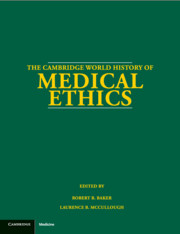Book contents
6 - Medical Ethics through the Life Cycle in Japan
from PART III - DISCOURSES OF MEDICAL ETHICS THROUGH THE LIFE CYCLE
Published online by Cambridge University Press: 28 May 2012
Summary
INTRODUCTION
The notion of the life cycle in the human life process from birth to death is integral to Japanese culture and has been influenced by Shintoism and Buddhism. This chapter addresses four key aspects of the life cycle with reference to medical ethics in Japan.
There are four concepts that are crucial to understanding Japanese conceptions of the life cycle: Sho, Ro, Byo, and Shi (Kimura 2000). Sho means both life and the coming into existence of life in this world. Ro means aging, an inevitable phenomenon in our life cycle. Byo means disease or being sick. Finally, Shi means death and dying. This set of these four key words encompasses quite a commonly accepted notion of the life cycle among the Japanese. This reflects the idea of suffering life expressed in various Buddhist scriptures such as the Lotus Sutra (Murano [1974] 1991). They are well-known expressions in Japan (Robert 1998).
The underlying theme of these four concepts can be summarized as Ku (suffering), which is an inevitable aspect of human existence according to the teaching of Buddha. In Buddhist teachings, people have to accept the reality of transitory life, governed by this process of Sho, Ro, Byo, Shi (Ui 1943). In Japanese thought all of this occurs in the Uki-Yo, which literally means “floating world,” denoting the transient secular world of people. Through these experiences of suffering in the life cycle, people have a chance to seek the final and everlasting “truth” for the sake of salvation.
- Type
- Chapter
- Information
- The Cambridge World History of Medical Ethics , pp. 132 - 136Publisher: Cambridge University PressPrint publication year: 2008



